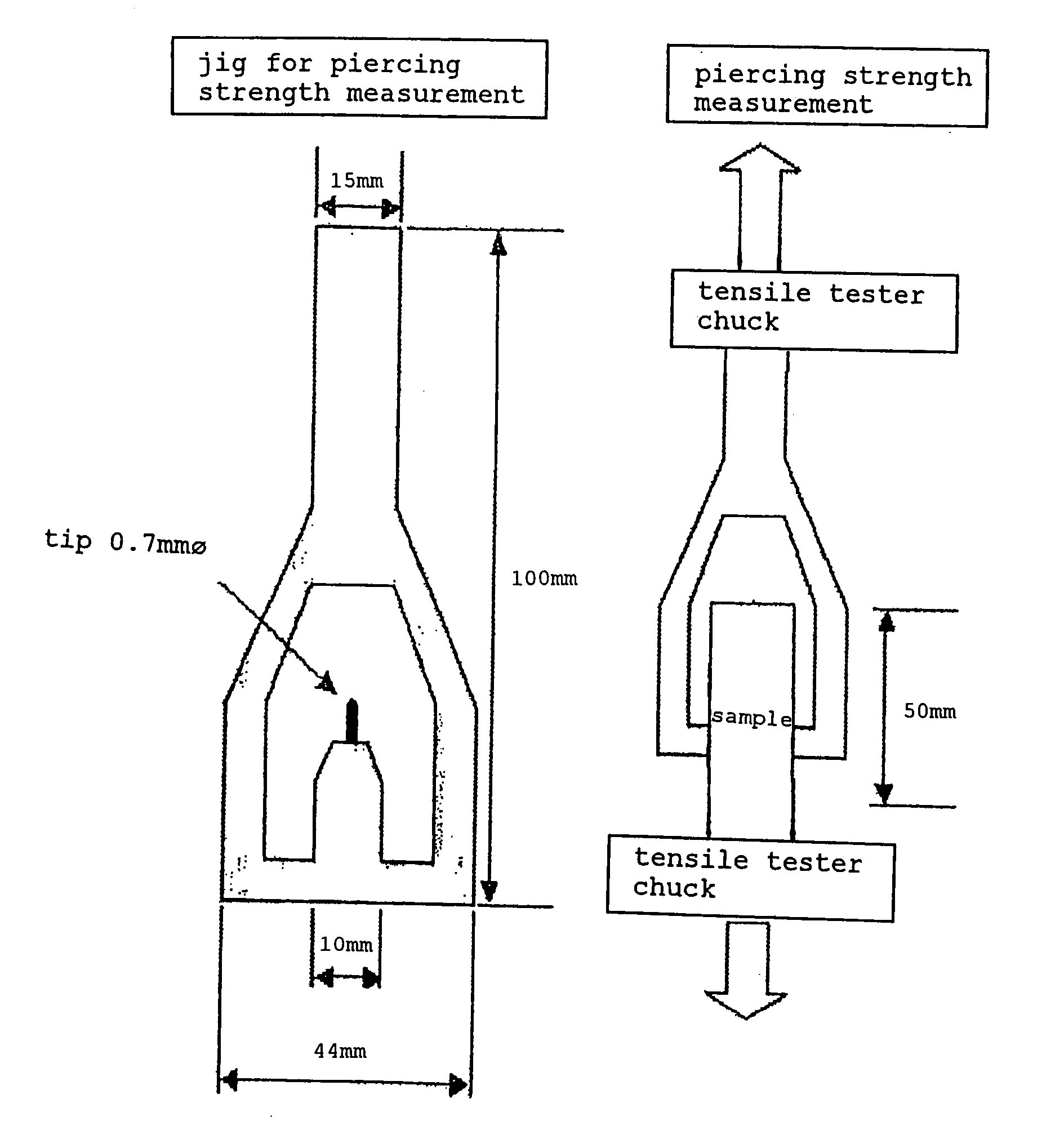Polyester Resin Film and Process for Producing the Same
a polymer resin and film technology, applied in the field of polymer film, can solve the problems of hygroscopicity of cellophane, lack of bending property and twistability, and difficulty in always providing cellophane having constant quality, and achieve superior bending property, superior bending property, and improved easy opening property.
- Summary
- Abstract
- Description
- Claims
- Application Information
AI Technical Summary
Benefits of technology
Problems solved by technology
Method used
Image
Examples
example 1
1: Preparation of Recycle Pellet (1)
[0066]A polyethylene terephthalate resin (RE554 manufactured by Toyo Boseki Kabushiki Kaisha, intrinsic viscosity 0.62, melting point 255° C.) added with silicon dioxide (Silysia 310 manufactured by Fuji Silysia, 2000 ppm) in advance during polymerization was used as polyester resin (A), placed in a 60 mmφ extruder (I) and melted at 285° C.
[0067]Furthermore, as polyester resin (B), terephthalic acid-ethylene glycol-cyclohensanedimethanol copolymer (FP301 manufactured by Toyo Boseki Kabushiki Kaisha, intrinsic viscosity 0.75, softening temperature of resin 180° C.) containing 30 mol % of cyclohensanedimethanol was charged in a different 60 mφ extruder (II) and melted at 250° C.
[0068]Thereafter, the contents of extruder (I) and extruder (II) in a molten state were led to 90 mmφ extruder (III) so that the discharge ratio would be (I) / (II)=65 / 35 (weight ratio) and mixed therein, extruded from a T-die at 265° C. to give an unstretched sheet with a thic...
example 2
[0074]Recycle pellets and film were obtained in the same manner as in Example 1 except that a static mixer (number of elements 12, cylinder temperature 260° C.) was used instead of the extruder (III).
example 3
[0075]Recycle pellets and film were obtained in the same manner as in Example 1 except that terephthalic acid-isophthalic acid-ethylene glycol copolymer (intrinsic viscosity 0.67, melting point 217° C.) containing 15 mol % of isophthalic acid was used as polyester resin (C) instead of polyester resin (B).
PUM
| Property | Measurement | Unit |
|---|---|---|
| temperature | aaaaa | aaaaa |
| melting point | aaaaa | aaaaa |
| melting point | aaaaa | aaaaa |
Abstract
Description
Claims
Application Information
 Login to View More
Login to View More - R&D
- Intellectual Property
- Life Sciences
- Materials
- Tech Scout
- Unparalleled Data Quality
- Higher Quality Content
- 60% Fewer Hallucinations
Browse by: Latest US Patents, China's latest patents, Technical Efficacy Thesaurus, Application Domain, Technology Topic, Popular Technical Reports.
© 2025 PatSnap. All rights reserved.Legal|Privacy policy|Modern Slavery Act Transparency Statement|Sitemap|About US| Contact US: help@patsnap.com


